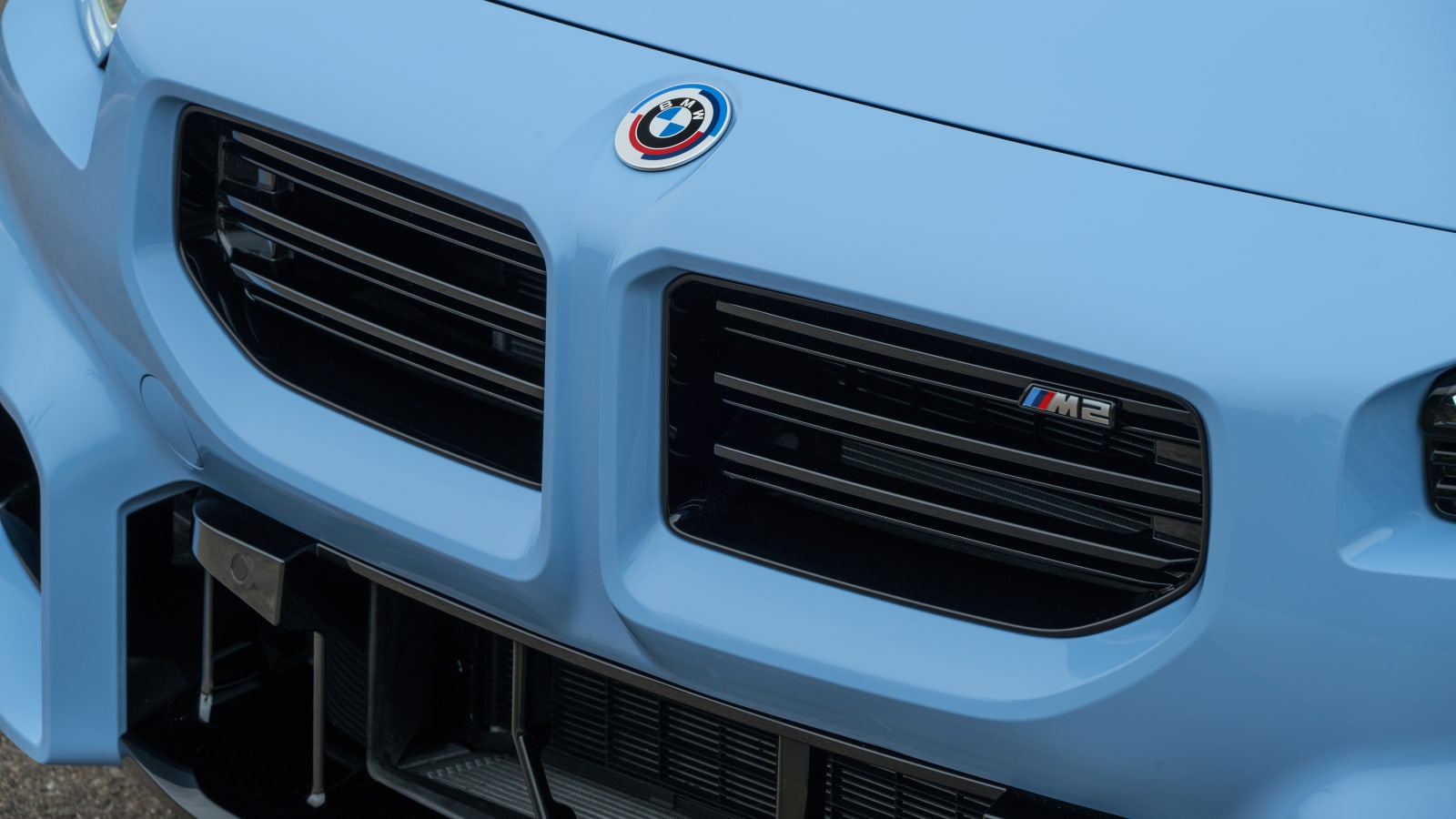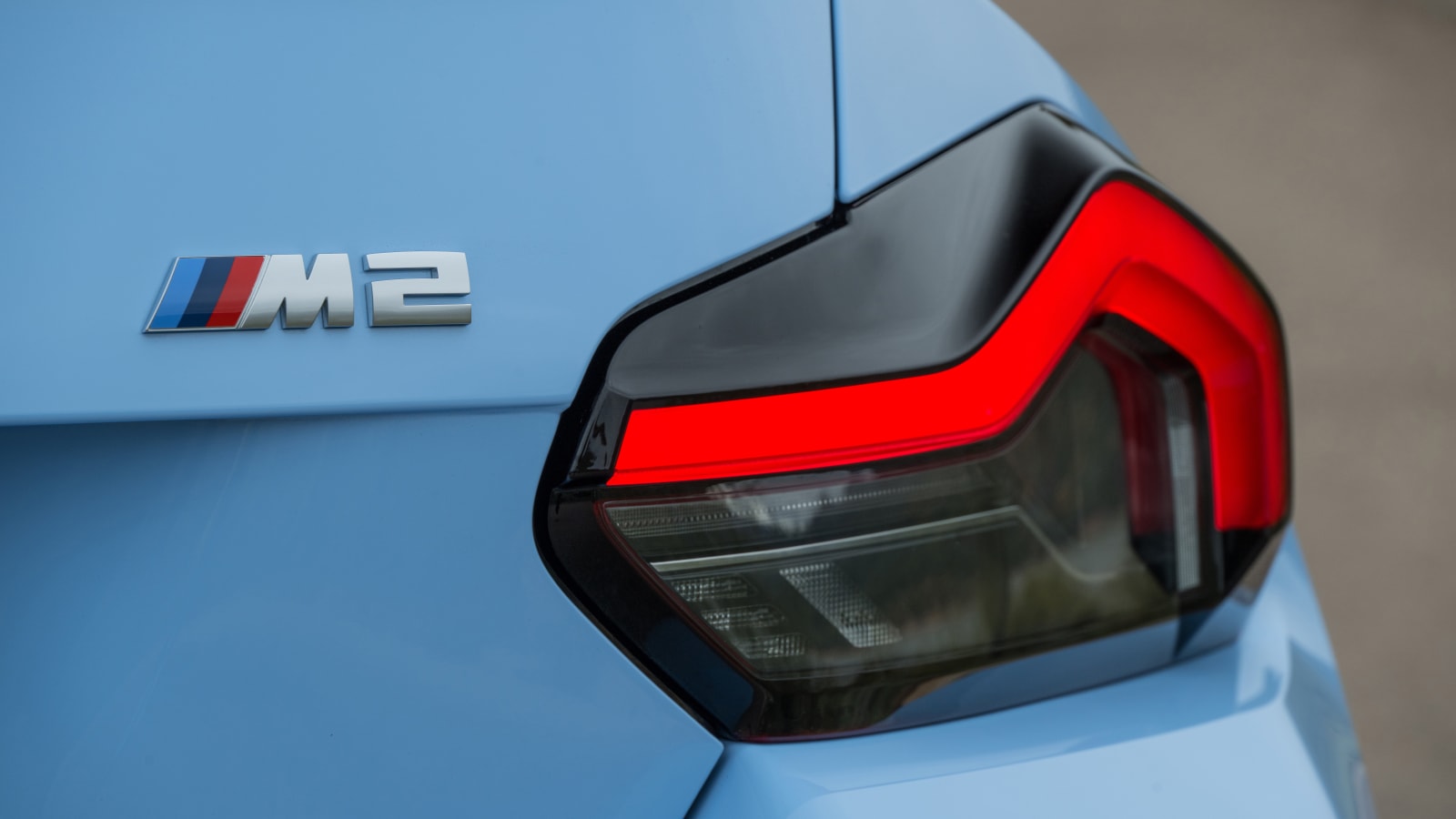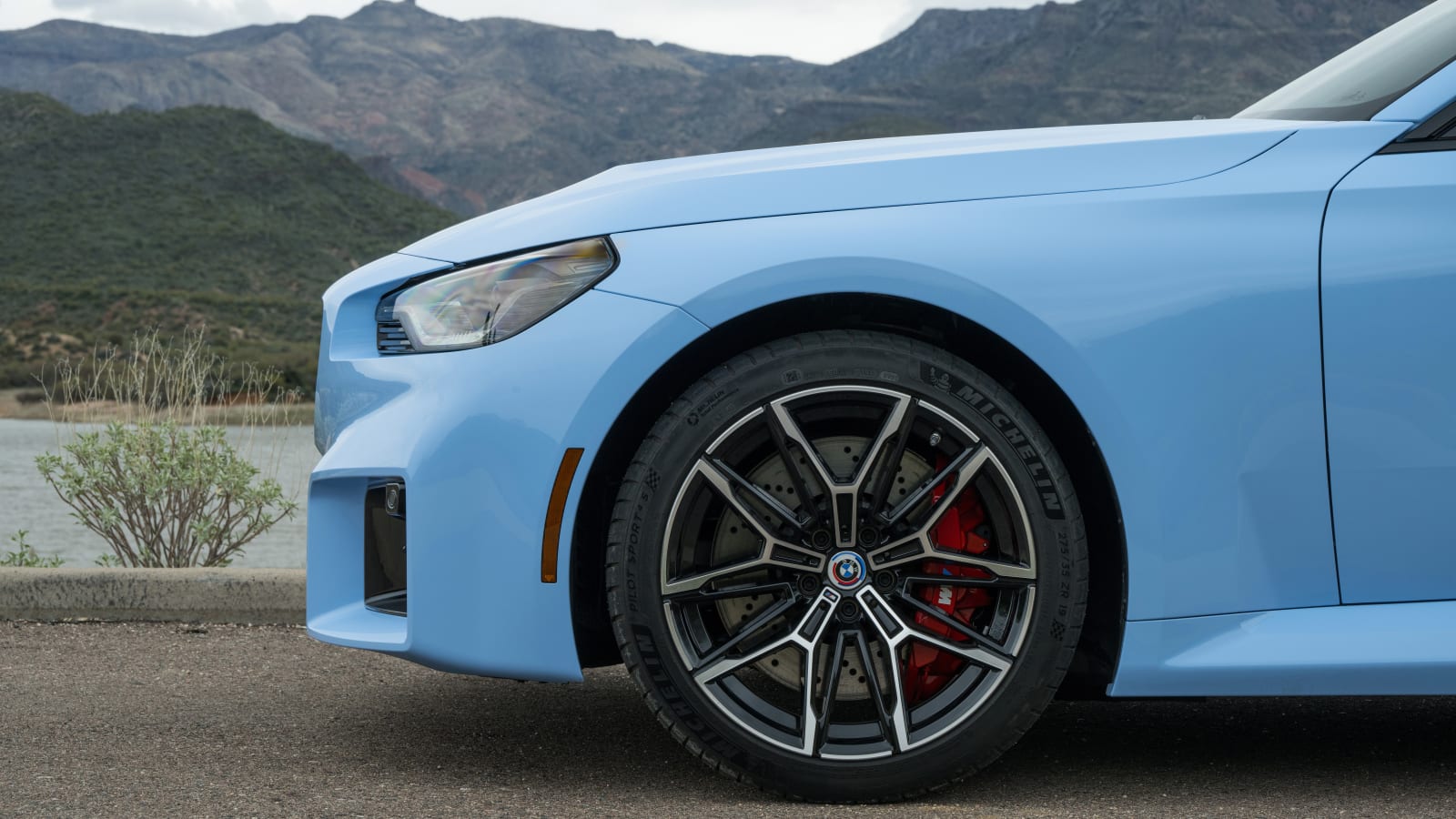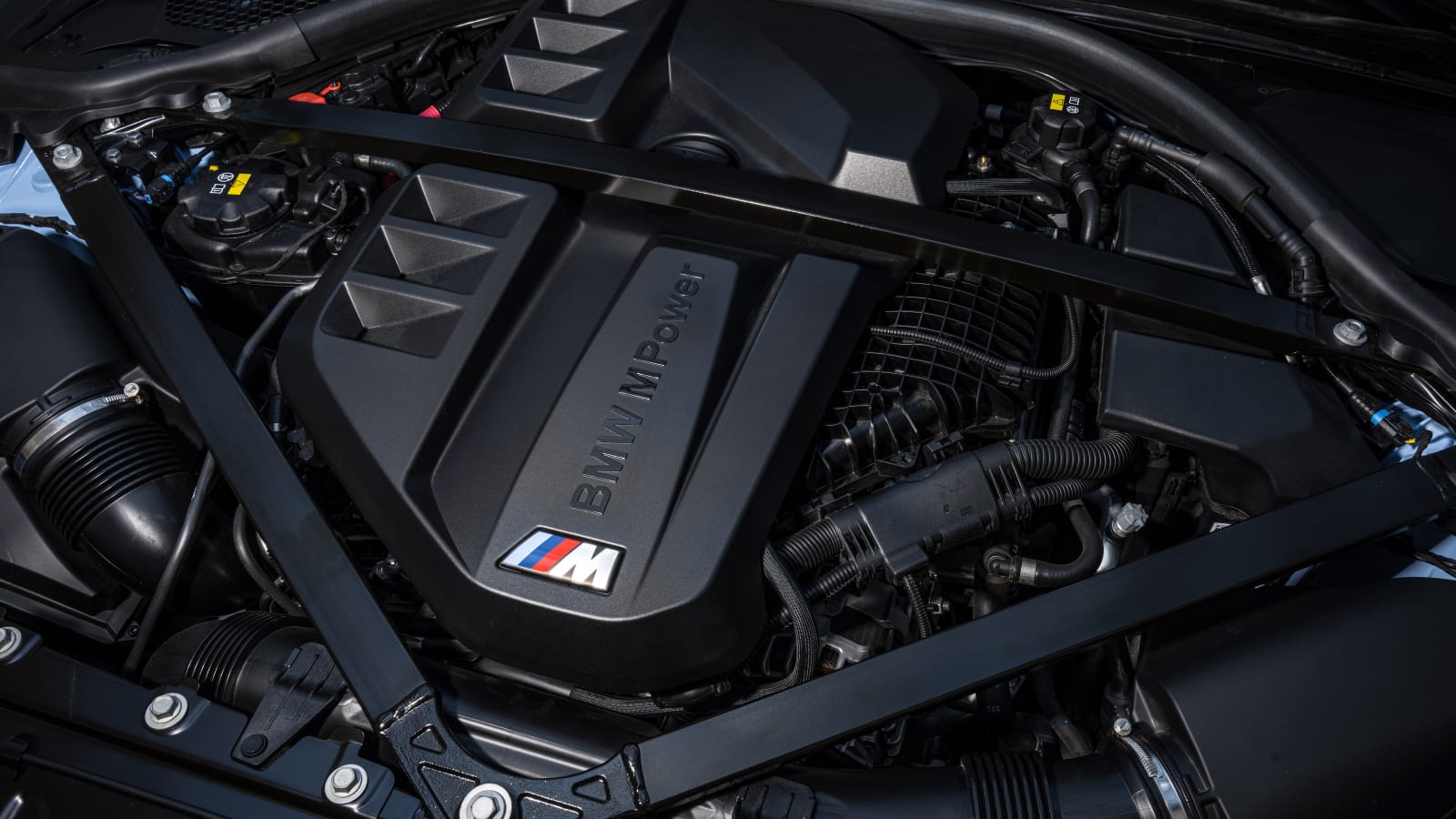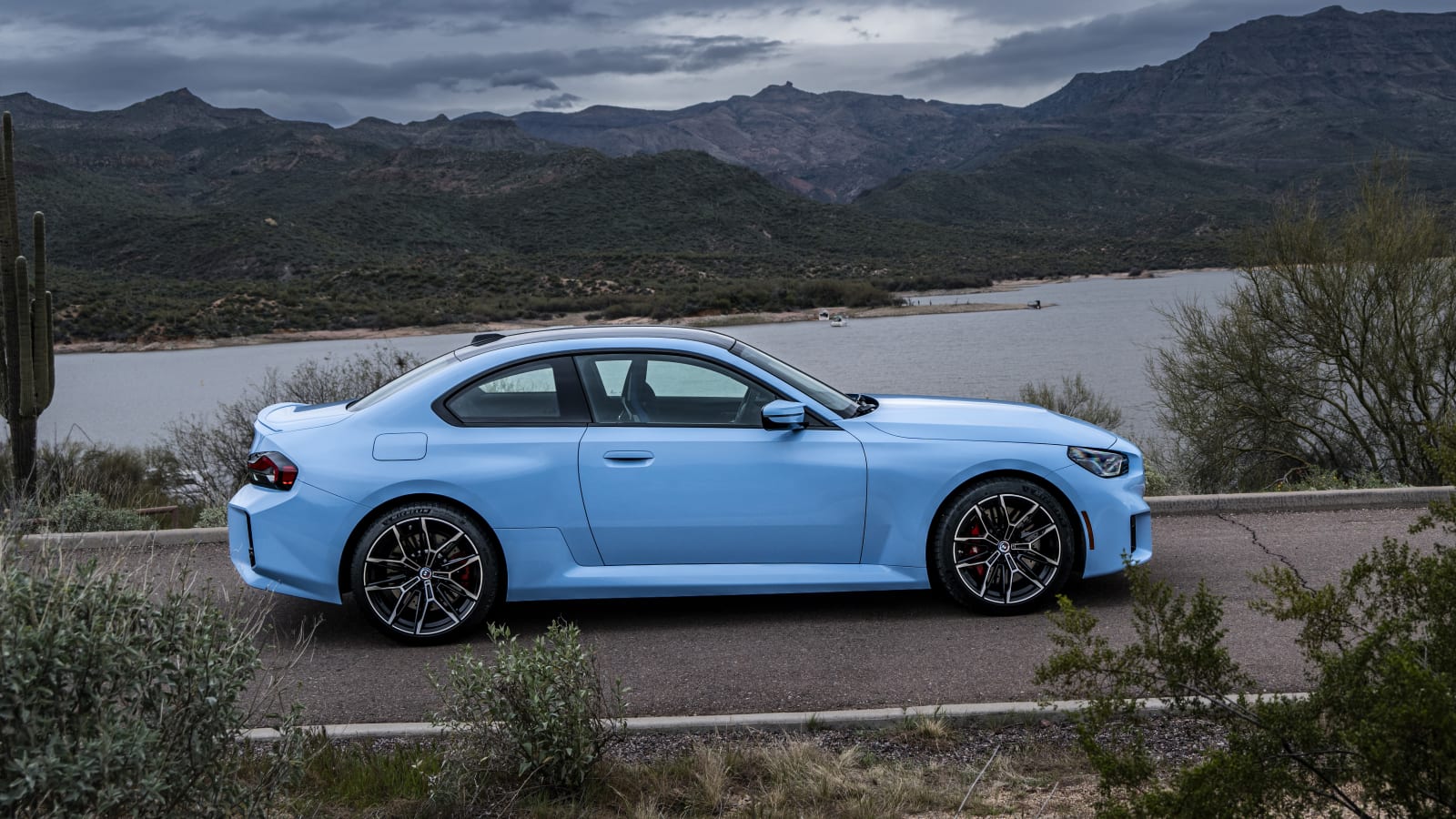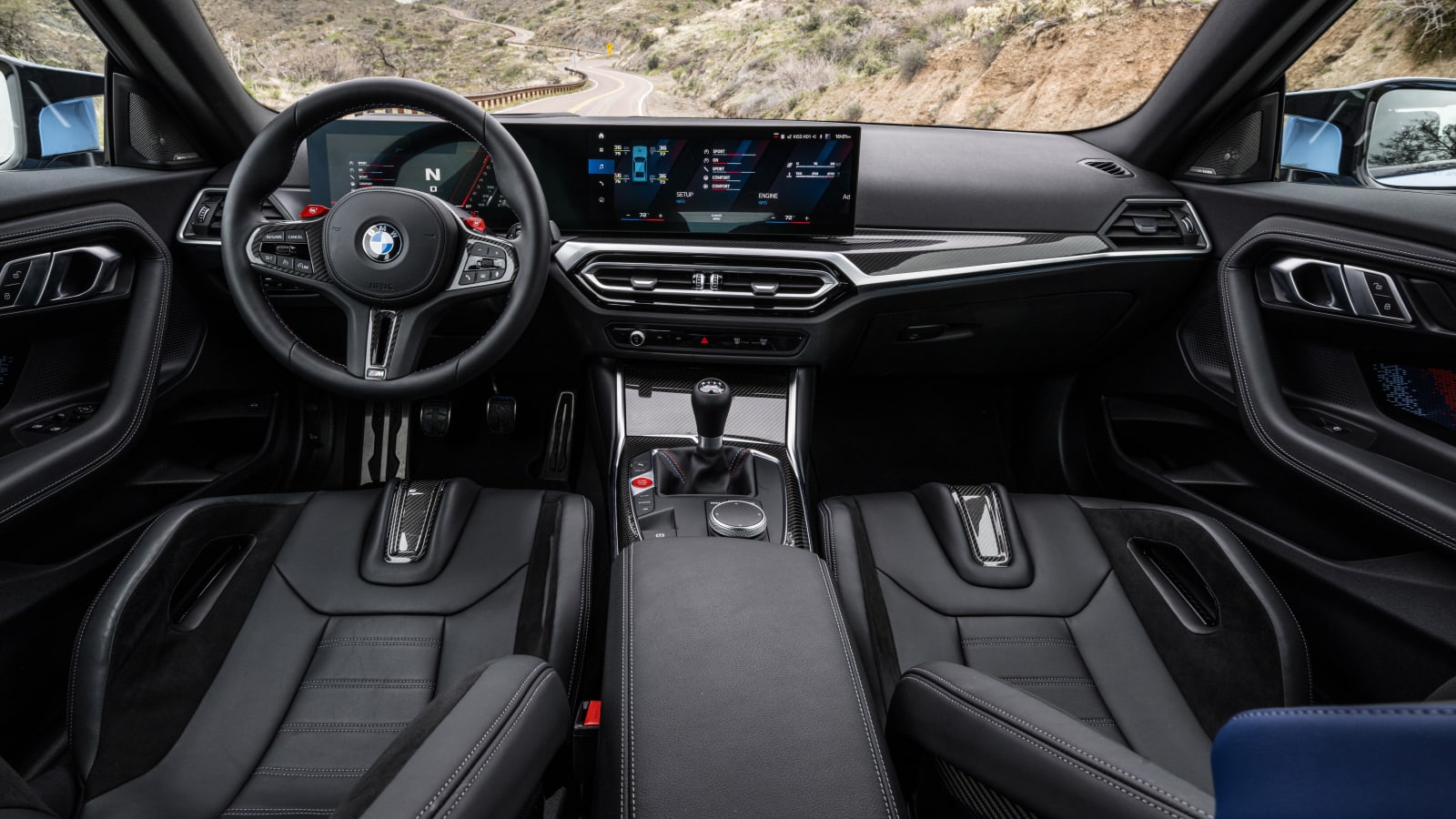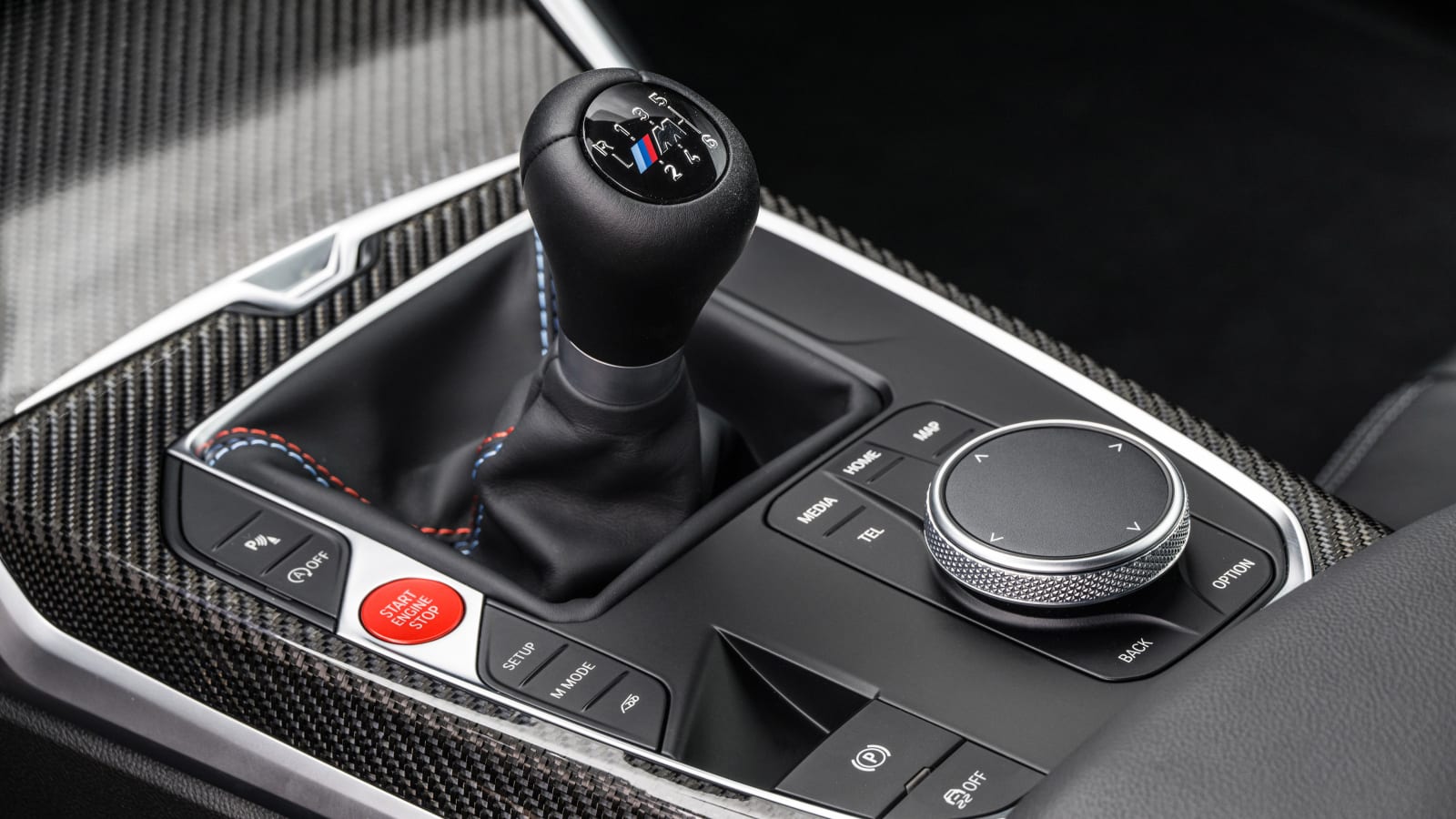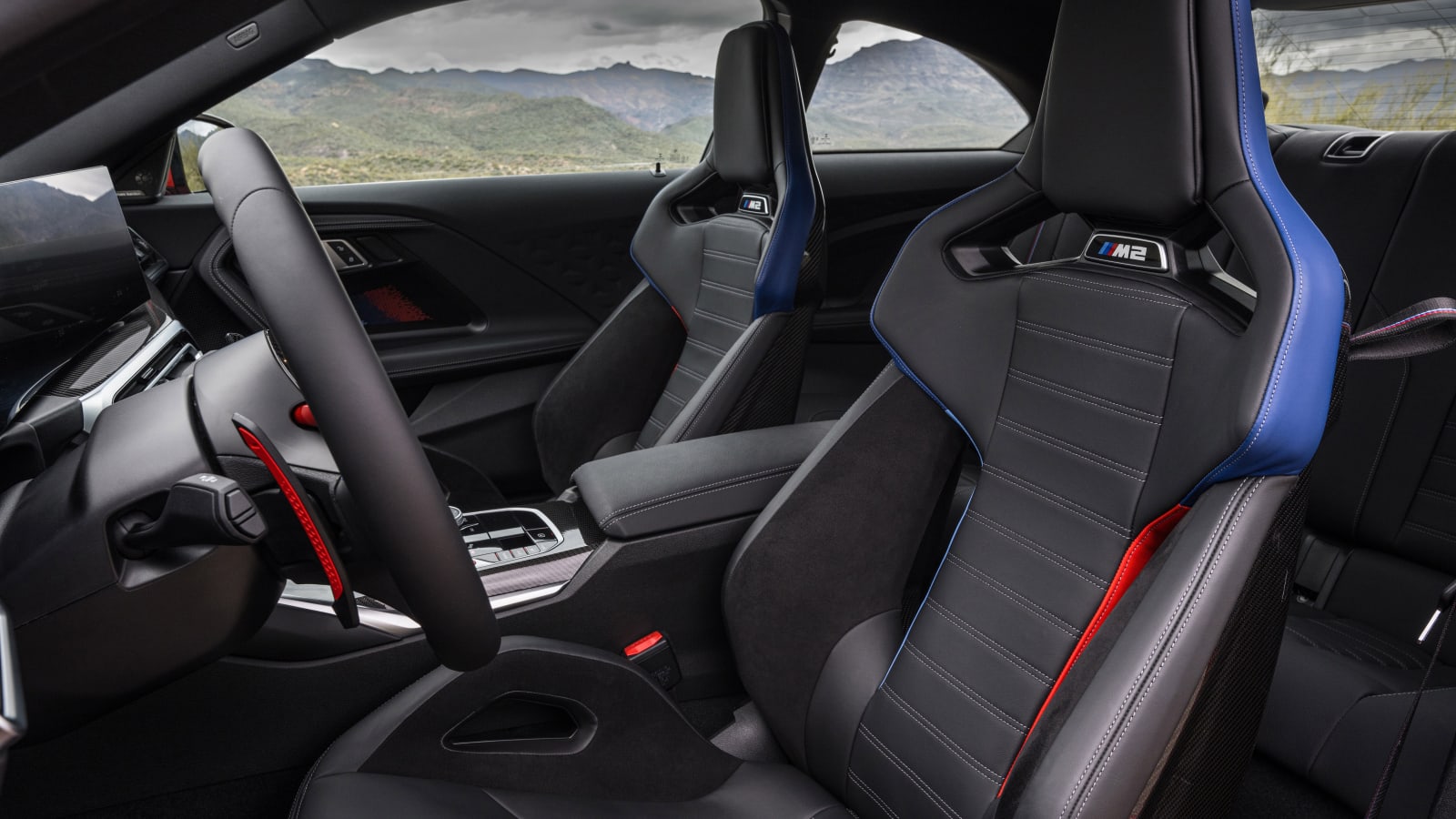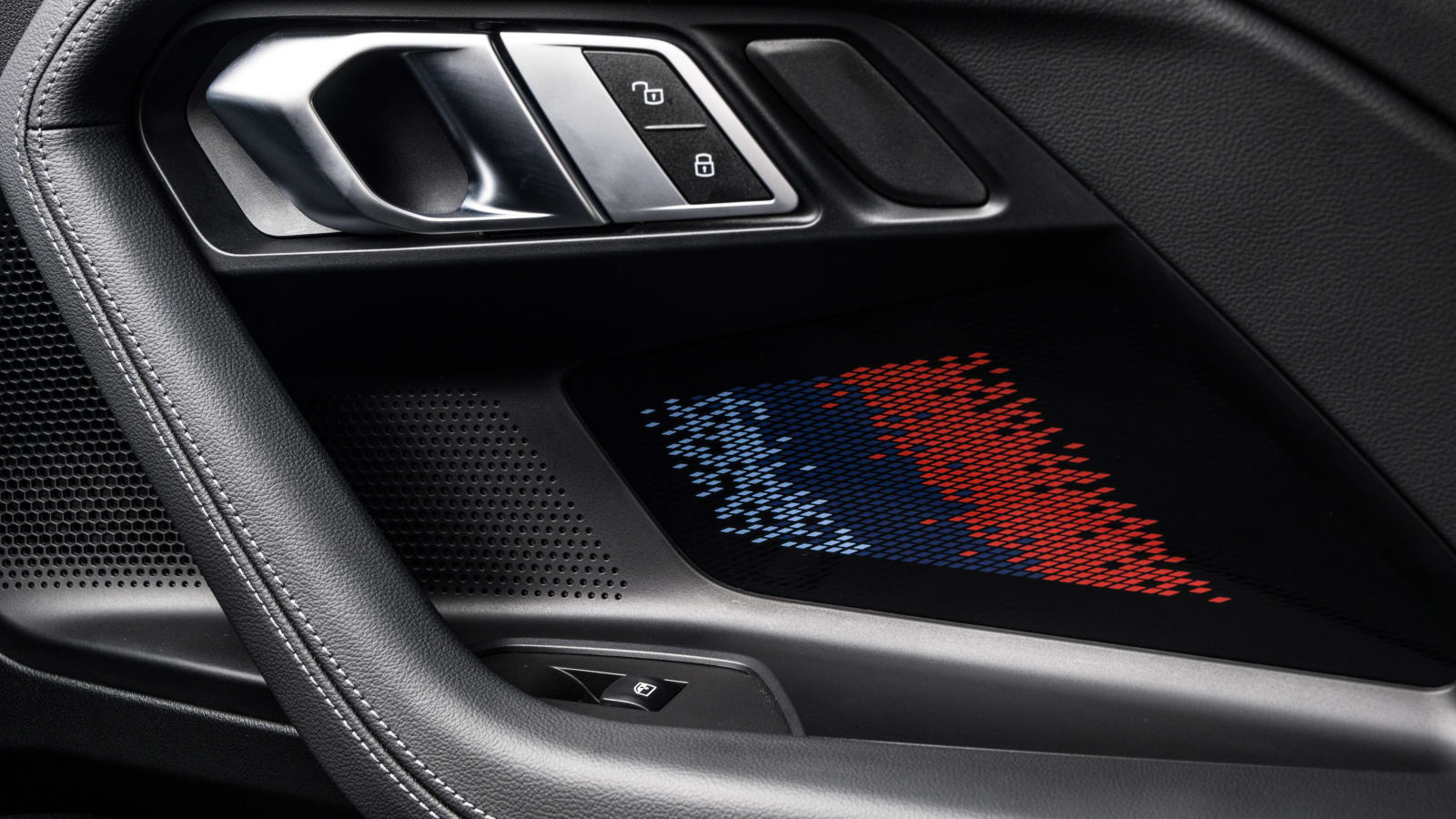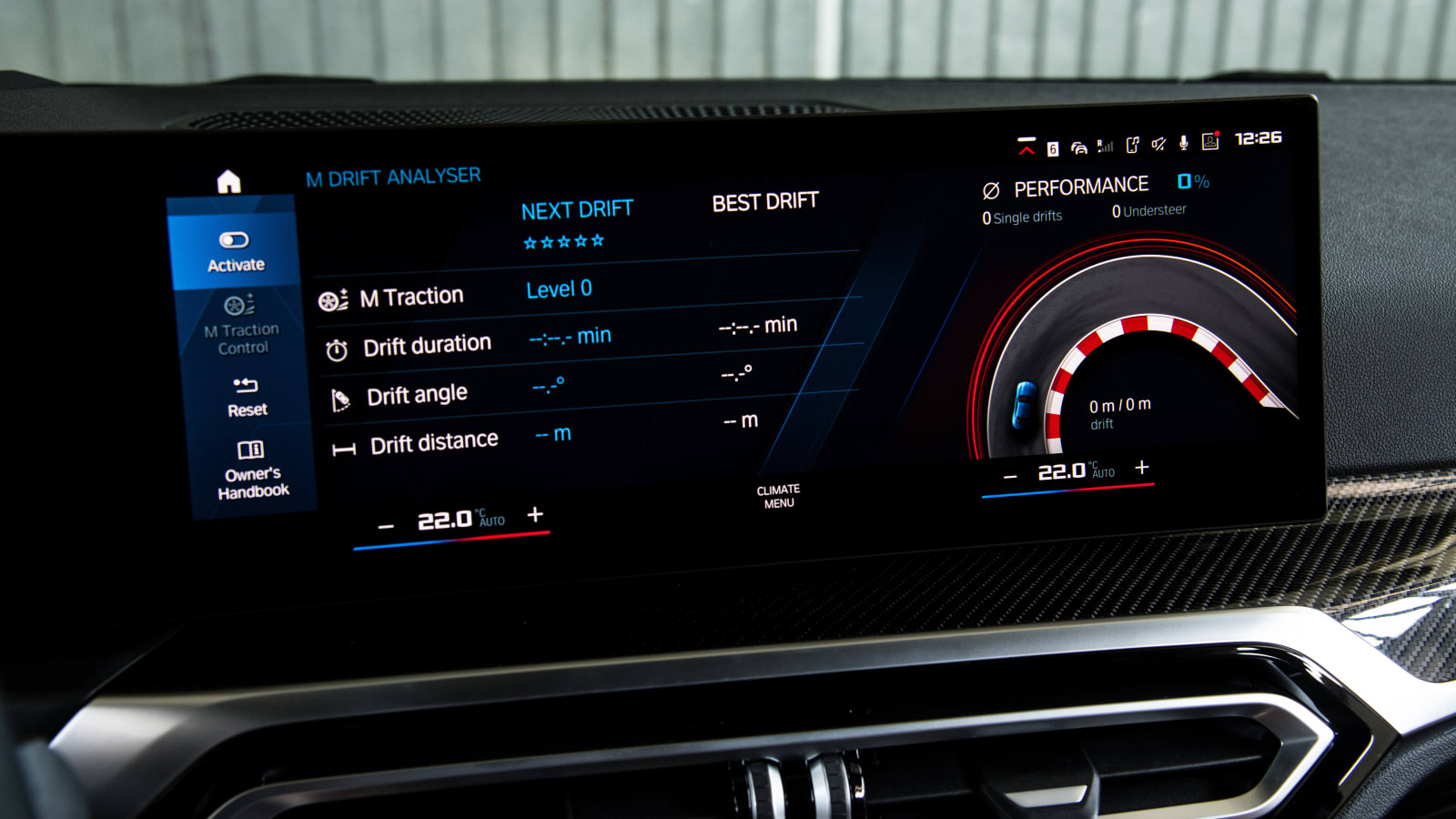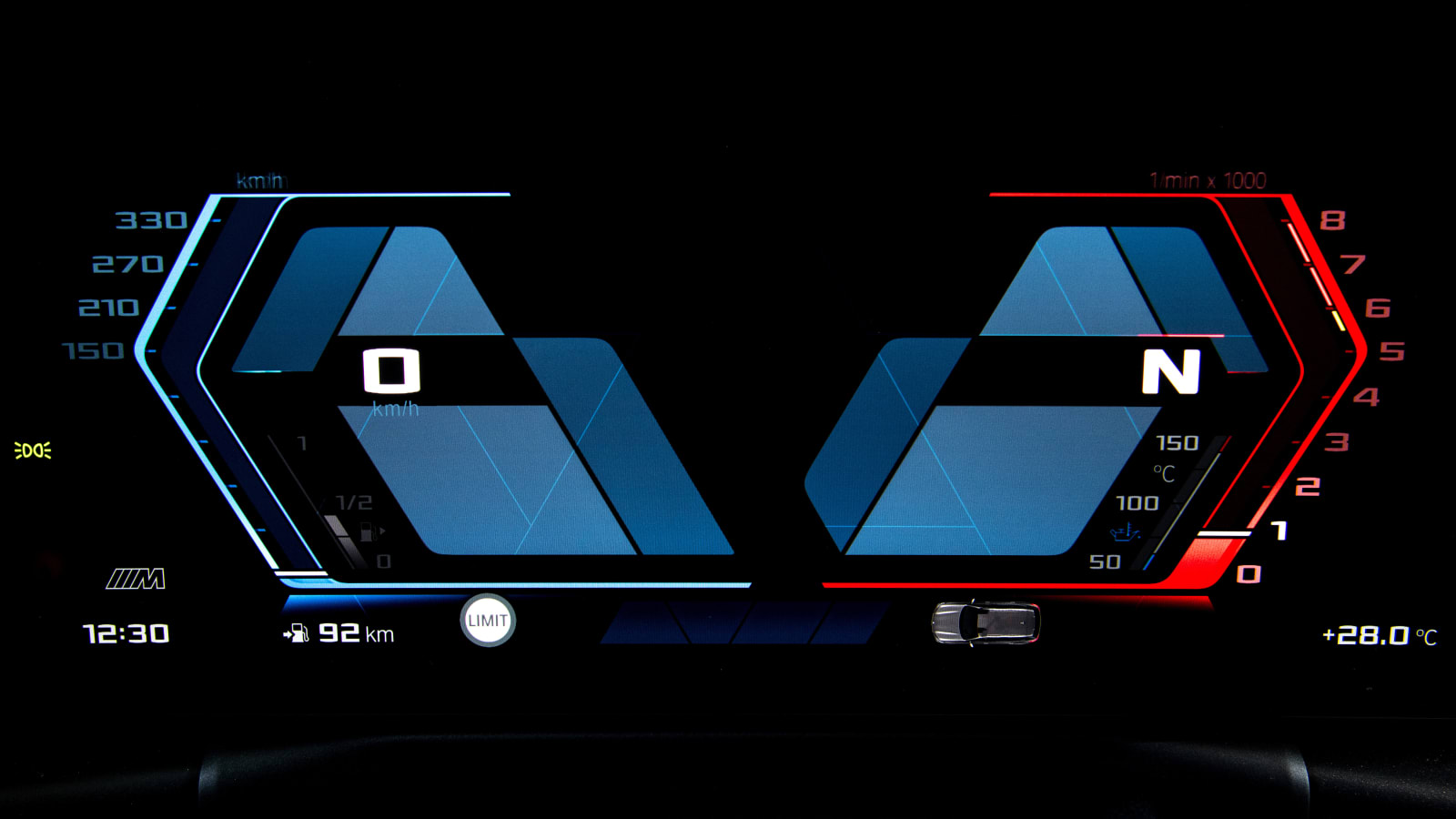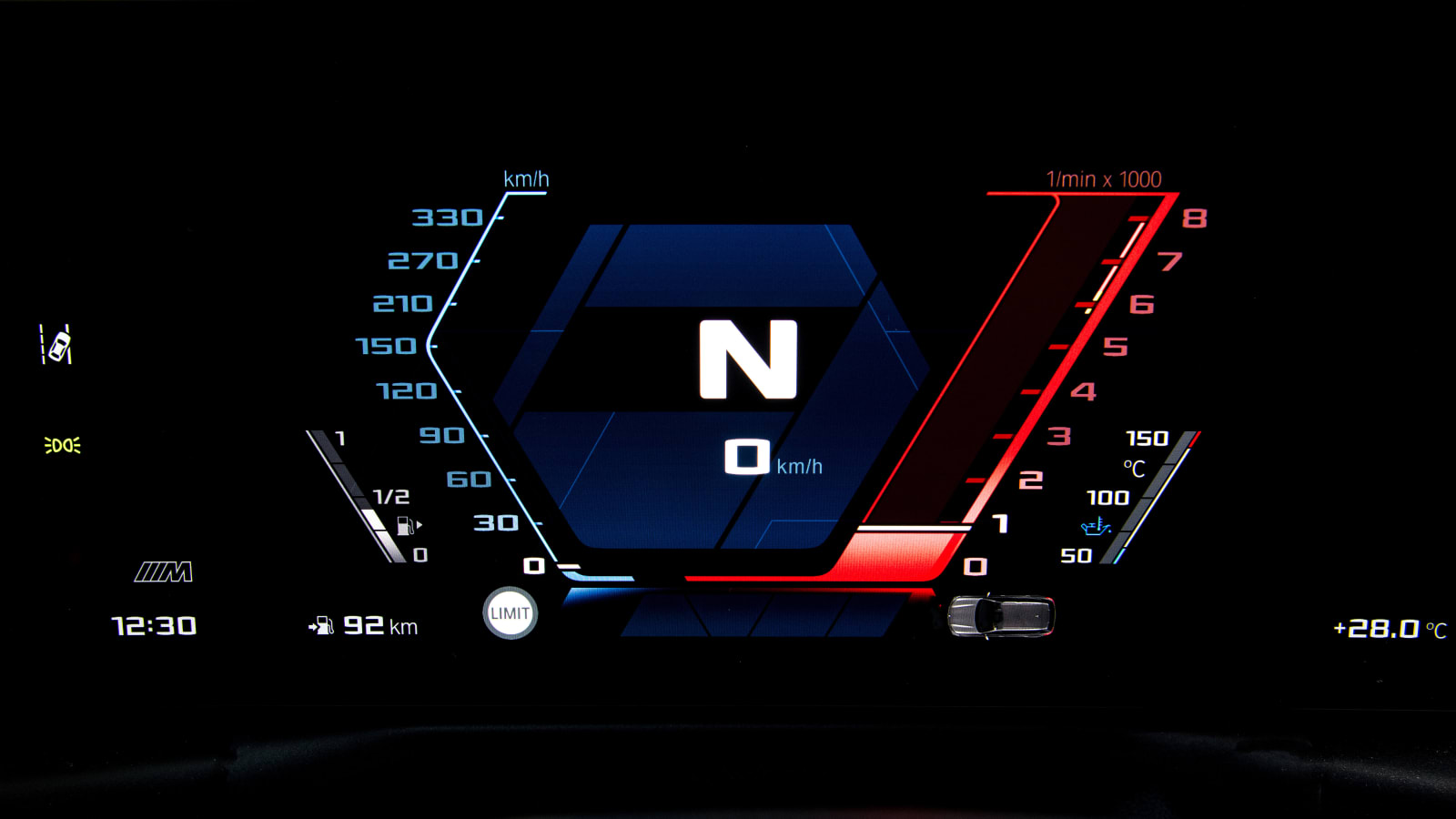SCOTTSDALE, Ariz. — The 2023 BMW M2 is the one we’ve all been waiting for. In just a single generation, the M2 line — including the M2, M2 Competition and M2 CS — stole our hearts and captured the small, performance BMW spirit lost by its other models that had grown in size and power. Now, it’s back for a second generation, and BMW didn’t stray too far from its original formula for success.
This new M2, as it did before in Competition and CS versions, borrows its powertrain — and so much more — from the M3/M4. This means forward motivation comes via the M division’s 3.0-liter twin-turbo inline-six. Output is slightly down versus the donor car, as the M2 produces 453 horsepower and 406 pound-feet of torque — that’s 20 horsepower less than the standard M4, but the same amount of torque. There’s no Competition version for now, but don’t be surprised if BMW introduces one down the road.
Shifting is done with either a six-speed manual transmission or an eight-speed automatic, both lifted from the M3/M4. Both are also no-cost options, but it’s the continued commitment to offering a manual transmission that we most deeply appreciate. Like other BMW manual transmissions, this one is rubbery but features short throws and a great shift knob. Compared to the M4’s shifter, there are the smallest of improvements to the feedback as you slot it into gears, making the M2’s manual a tiny bit more fun to use. We didn’t get the opportunity to test out the automatic at BMW’s first drive event, but if it mimics the transmission from the M3/M4, it’s going to be a smooth shifter when tooling around town and feature snappy-enough response when you swap it into more aggressive drive modes. The sharpness of the M2’s outgoing dual-clutch automatic will be missed, but the trade-off for refinement in everyday driving is one we can live with. Regardless of performance, we highly recommend the manual — these kinds of cars simply won’t be around forever.
Like its 2 Series donor car, the M2 is built upon the same modular platform as other rear-drive BMWs. It’s also longer, wider and lower than its predecessor. Its overall length is now just 4.3 inches less than that of the M4, and the M4 is a big, heavy car these days. Therefore, so is the M2. In fact, curb weight for the manual checks in at 3,814 pounds; the automatic at 3,867. That’s only about 15 pounds less. At least the M2 is rear-drive only, just how the M gods intended it to be.
Its new sheetmetal is controversial, to say the least. BMW may not have applied its big grille aesthetic, but the boxiness and sharp angles everywhere you look are polarizing. The massive fenders are easily its most alluring quality in person, and if you’re questioning its style in photos, it’s worth going to see the M2 in the flesh for a second opinion. The more we walked around it, the more we ended up liking and appreciating its quirkiness. Besides the customary quad exhaust poking out the back, essentially nothing about this car looks like an M4. That’s a good thing, because design is one of the biggest differentiators between the two.
The M4’s chassis stiffening, bracing componentry and suspension design is transferred over to the M2 in typical M Frankenstein fashion. It doesn’t stop there, though, as the M2 shares BMW’s adjustable brake-by-wire braking system, 10-mode stability control intervention system, rev-match downshift program (easily turned off) and even the same staggered-size wheels and tires. With so many similarities to the M4, it comes as no surprise that the M2 shares a number of driving qualities — ride, engine feel, steering and brakes — with its slightly bigger sibling. That said, the M2’s smaller footprint still imbues it with a character of its own.
Accelerating from a stop instantly reveals that the M2 has more than enough power. The rear end surges forward with delight as it squirms around behind you through first. Shift quickly into second, and the fat torque of the inline-six will send the rear end into another sideways scramble before quickly finding enough traction for rapid acceleration. It’s all a bit theatric and silly for the sake of being silly versus the more stable M4. Sixty mph arrives in 4.1 seconds with the manual; 3.9 seconds with the automatic. The M4 manual does it in the same 4.1 seconds, while the auto-only Competition with more power drops it to 3.8. The engine and exhaust sounds are familiar, and while there’s no doubt this exhaust sings a lovely growl-snap tune all by itself, there could be less synthetic noise pumped into the cabin.
Don’t confuse the M2’s accelerative personality as validation that the M2 is the same rabble-rouser of a sports coupe that it was before, though. Just like the regular 2 Series, the new M2 smooths out some of the previous car’s ragged edges. The outgoing model could bite you if you weren’t aware of its tendencies. Such an outcome is inevitable when a short wheelbase and tons of power at the rear wheels are combined. Meanwhile, the new M2 tones the frazzled character of the old car back a few notches by being more predictable and less likely to step out on you. This is the case despite BMW’s efforts to carry over the previous M2’s character.
Initial turn-in reveals a sharper front end than the M4, as BMW installs stiffer springs in front and softer springs in back. The goal here was to give the M2 a more responsive and tighter front-end response than the M4, but to also keep the rear end lively in the same way the previous M2 was constantly moving and chattering away at you from behind. It works, to a degree, but the more difficult-to-drive and less-pinned-down old M2 was more lovable.
What’s undeniable for the new M2 is its upgrade in performance versus the old model. Finally, BMW gives the M2 electronically controlled adaptive dampers. Outside of the CS, the old M2 and M2 Competition were stuck with passive dampers only. Just as we were hoping, this allows the M2 to be both forgiving and comfortable on long highway slogs, but tap a few buttons, and the chassis takes on a notably stiffer profile for more intensive use. And while the dampers’ Sport Plus mode might be the ideal setting for a track, the level of damping was still surprisingly acceptable for twisty road usage. Just like the new M3 and M4, this suspension won’t torture you with unforgiving stiffness, instead opting for a middle ground that recognizes not every road in the world is as smooth as glass.
Turn the wheel into a corner for the first time, and unless you’ve driven the latest M3/M4, the light steering rack is going to come as a surprise. Thankfully, BMW is continuing along its journey of once again realizing that heavy steering does not always equal good steering. This M2 is tuned to match that philosophy, and it’s better for it.
Many of the new M2’s impactful updates come inside the cabin, most notably from the optional carbon bucket seats and new Curved Display running BMW’s latest tech interface. The seats, while perhaps prohibitively expensive as part of a $9,900 carbon package, are a huge temptation if you like sitting low in your sports car. We tried out both the standard seats and carbon buckets borrowed from the M4, and the whole attitude of every drive changes when you slide into those gorgeous carbon seats that keep your body glued in place no matter the G .
The Curved Display that consists of a 12.3-inch digital cluster and 14.9-inch infotainment system makes the old M2’s setup look old and sad at first glance. However, start using the shiny and pretty new screens, and the beautiful simplicity of the old M2 might start looking favorable. None of the available screen display modes offer a traditional round tachometer, as BMW prefers to show off (or lose the plot if you prefer) with edgy vertical or slanted-line rev counters. They’re just not as easy to read, especially when you actually need a tach with a manual transmission. While the graphics might speak to some drivers or even BMW’s designers, why not at least provide the option of a different, traditional layout as most other automakers do? Isn’t customization one of the advantages of digital instrument clusters in the first place?
Now, direct your attention over to the infotainment system, and you’ll find the first M2 that has both Apple CarPlay and Android Auto capabilities. The largely touch-control climate system and infotainment is not as user-friendly compared to what BMW offered before, and it will surely prove itself annoying if you buy the M2 as a daily driver. Look around the rest of the cabin, though, and the new M2 is the most luxurious yet. Neat touches like the M tri-color graphic on the doors, 3 Series-derived design/feature set and optional tech features aplenty (HUD, wireless phone charging, and even ) abound if you want them.
As the M2 grows in size, sees performance gains and more luxury features, its price edges up accordingly. The original M2 that launched in 2016 started at just $52,695, while this new M2 starts at $63,195. Adjust that for our higher-than-usual inflation, and while the number sure is bigger, the new M2 looks fairly priced, even if there’s a bit of initial sticker shock.
Significantly more so than the previous generation, the new M2 boils down to a slightly shorter and more budget-friendly M4 with unique styling. The two drive way more alike than before, but the M2 is still the one to get if you prefer small and spunky sports cars.
Related video:


